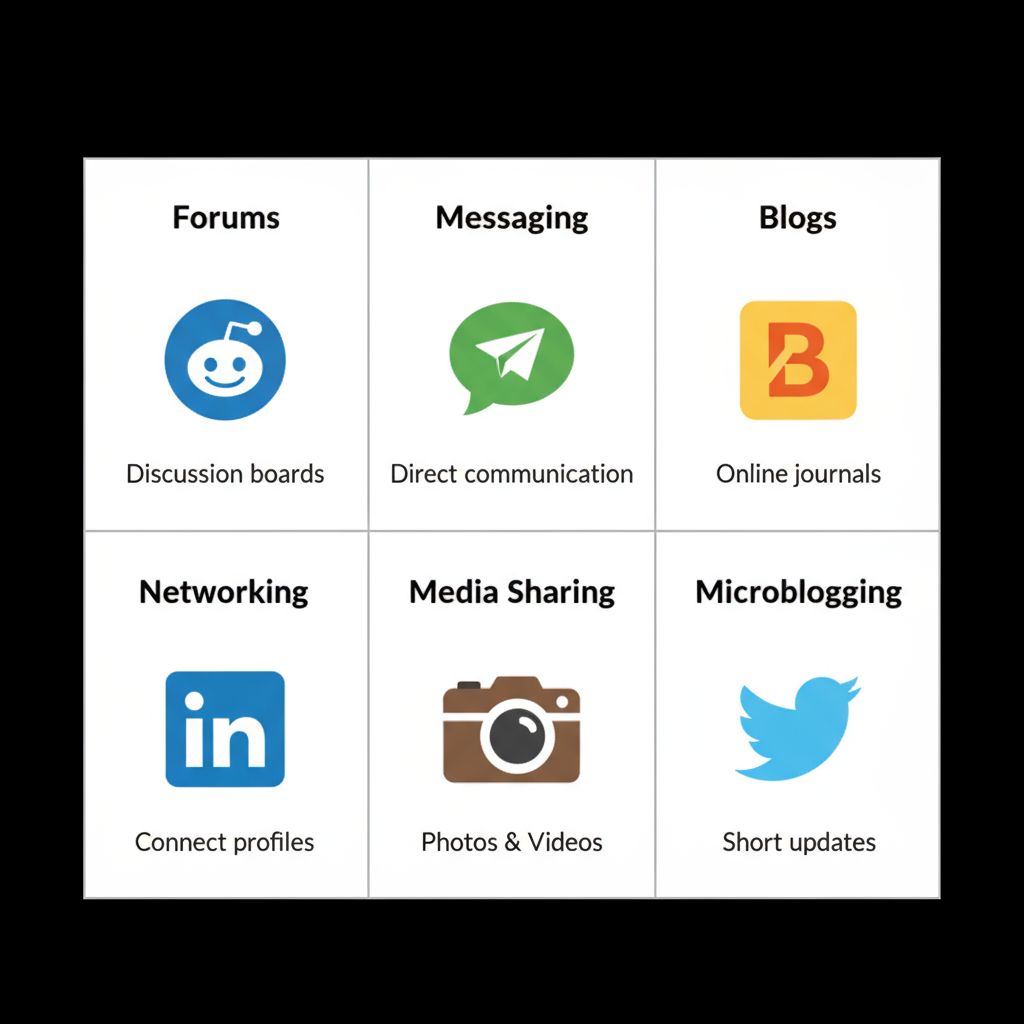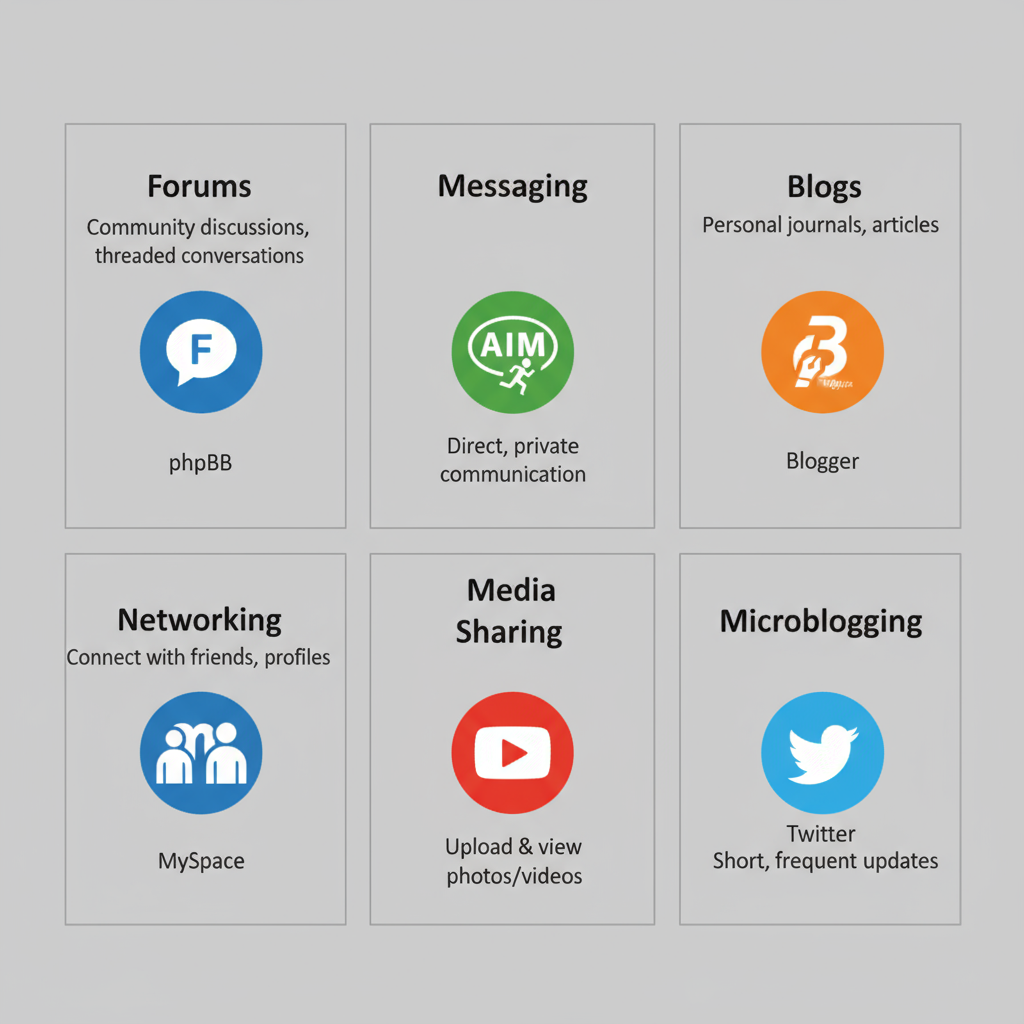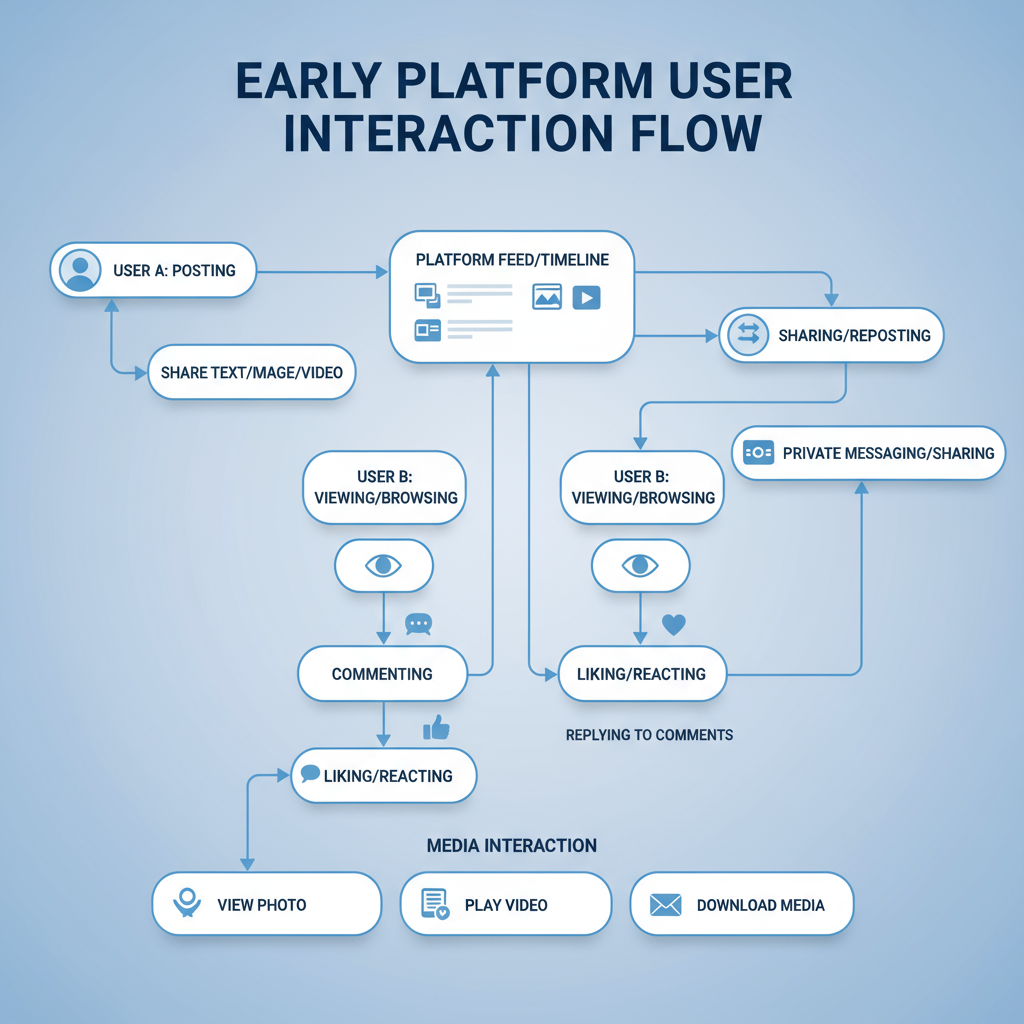Basic Forms of Social Media and Early Platform Examples
Explore the basic forms of social media from early forums and instant messaging to blogs and visual sharing sites, tracing their evolution over time.

Introduction to Social Media and Its Evolution
Social media has transformed how we communicate, share knowledge, and engage with communities across the globe. From primitive messaging boards to complex AI-powered networks, its evolution reflects decades of technological innovation and cultural shifts.
When people ask "which is a basic form of social media", they’re often referencing the earliest digital platforms where users could post information and interact socially online.
Exploring these basic forms offers nostalgic insight and reveals why certain principles—like user-generated content and community engagement—remain influential in modern design.

---
Defining "Basic Form" in the Context of Social Media Platforms
A basic form of social media is generally defined as a platform or system that enables users to:
- Create or contribute text or visual content.
- Interact with others through messages, comments, or posts.
- Share information in publicly or semi-public spaces.
Most early social media platforms were text-focused, had limited multimedia support, and operated using simple designs. They relied on organic exploration and direct social interaction, without algorithmic filtering or targeted advertising.
---
Early Examples: Forums and Bulletin Board Systems (BBS)
Long before Facebook timelines and TikTok videos, bulletin board systems (BBS) of the 1980s–1990s allowed users to connect via dial-up modem. Participants could post announcements, access files, and reply to messages asynchronously through topic-specific “threads.”
Internet forums soon improved on this model, offering:
- Thematic discussion threads.
- Moderators to manage community conduct.
- Early personalization via avatars and signature banners.
These platforms were archetypal basic forms—online communities built purely for interaction, free from corporate algorithms.

---
The Rise of Instant Messaging (ICQ, MSN, AIM)
While forums offered asynchronous discussion, the mid-1990s introduced real-time messaging with platforms such as:
Key Platforms
- ICQ – Launched in 1996, pioneering real-time message alerts, status updates, and user contact lists.
- MSN Messenger – Integrated with Hotmail, enabling text chat, file sharing, and expressive emoticons.
- AIM (AOL Instant Messenger) – Known for “buddy lists” and themed chat rooms.
These early instant messengers formed micro-communities, facilitating casual conversation without commercial feeds or ad-driven engagement.
---
Blogs and Personal Sites as Early Social Sharing Tools
The late 1990s and early 2000s saw a surge in blogging, with sites like Blogger, LiveJournal, and WordPress empowering anyone to publish online.
Core traits of blogs as basic social media:
- Chronological publishing format.
- Comment sections fostering discussion.
- Thematic and visual customization to reflect an author’s personality.
Blogs were often less interactive than networking sites but created large communities around niche topics.
---
Transition to Social Networking Sites (Friendster, MySpace)
Around 2002–2003, Friendster and MySpace blended features of personal homepages, forums, and messaging into centralized networks:
- Public and private user profiles with images and custom layouts.
- Direct comments on profiles or posts.
- Music sharing and fan pages, fostering creative culture.
Algorithmic suggestions were minimal; visibility was determined by direct social connections and network activity.
---
Photo and Video Sharing Basics (Flickr, YouTube)
By the mid-2000s, visual content became a major force online:
- Flickr: Popular for photo archiving, tagging, and collaborative discussion.
- YouTube: Launched in 2005, enabling video uploads, subscriptions, and threaded comments.
Both stuck to basic social principles: user-driven uploads, community-centric interactions, and chronological or search-based discovery.

---
Common Core Features of Basic Social Media Platforms
Most early social media shared certain foundational elements:
| Feature | Description | Example Platform |
|---|---|---|
| User Profiles | Personal space to showcase identity and interests | MySpace |
| Content Posting | Public or semi-public sharing of text, images, or files | Forums, Blogs |
| Comments/Replies | Threaded discussions for user feedback | Flickr comments |
| Messaging | Direct private or group communication | AIM, MSN |
| Basic Search | Simple keyword search to locate users or topics | BBS, Forums |
These features remain embedded in modern networks, even within advanced app ecosystems.
---
Differences Between Basic Forms and Modern Complex Networks
Contemporary platforms like Facebook, Instagram, and TikTok layer algorithmic content curation, pay-per-click advertising, and e-commerce integrations.
Basic forms, by contrast:
- Displayed content in strict chronological order.
- Relied on user initiative rather than predictive analytics.
- Remained community-first instead of influencer or brand-centric.
This design fostered genuine engagement but lacked scalability and monetization potential.
---
Benefits and Limitations of Basic Social Media
Benefits
- Straightforward functionality.
- Predictable, chronological content flow.
- High degree of community trust and ownership.
Limitations
- Limited multimedia capabilities.
- Inability to support massive concurrent audiences.
- Few automated tools to prevent spam or abuse.
Learning these distinctions helps understand why basic platforms inspired modern solutions while retaining value in education and digital culture.
---
How Basic Forms Shaped Current Trends
Elements of early digital communities persist today:
- Facebook Groups echo the topical focus of forums.
- Twitter threads replicate BBS discussion chains.
- Private messages on Instagram and Messenger evolved from MSN/AIM chat protocols.
The underlying goal—uniting users through shared interests—remains constant.
---
Tips for Exploring Basic Social Media for Learning or Nostalgia
If you’re curious about the early days of online socialization, consider:
- Joining still-active niche forums.
- Using Wayback Machine to browse old site archives.
- Trying retro messaging apps or BBS replicas.
- Reading preserved blog posts and comment exchanges.
These activities offer perspective for UX designers, digital historians, and enthusiasts alike.
---
Conclusion: Why Understanding Origins Matters for Future Trends
In answering "which is a basic form of social media", history points strongly to forums, BBS, early instant messengers, blogs, and the first social networking sites. Each introduced user-generated content and community interaction without heavy corporate control.
By studying these origins, creators can design next-generation networks that uphold authentic connections over algorithm-driven feeds. Appreciating the past isn’t about resisting innovation—it’s about shaping the digital future with stronger, more human-centered communication.
---
Summary: Basic forms of social media—forums, instant messengers, blogs, and early networking platforms—established the core principles of online community. Understanding them deepens awareness of today’s social trends and can inspire more organic, authentic ways to connect. Explore these roots now and reimagine the future of online interaction.




